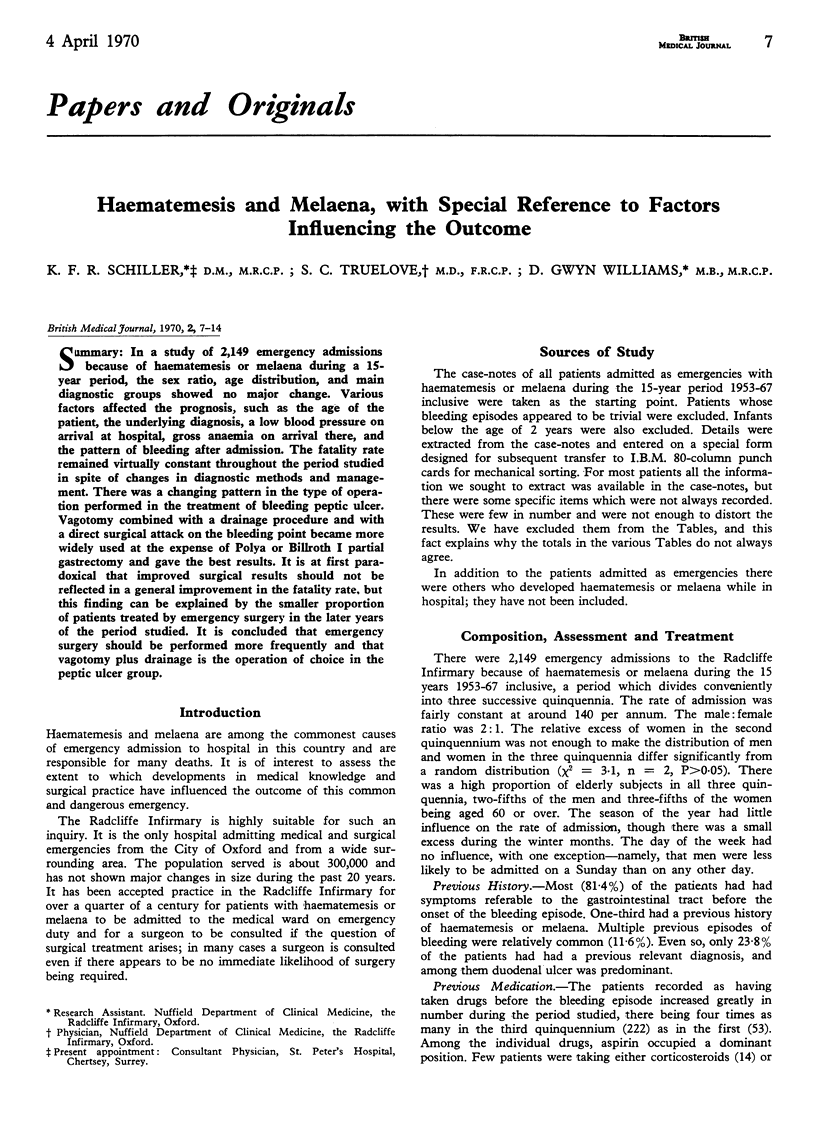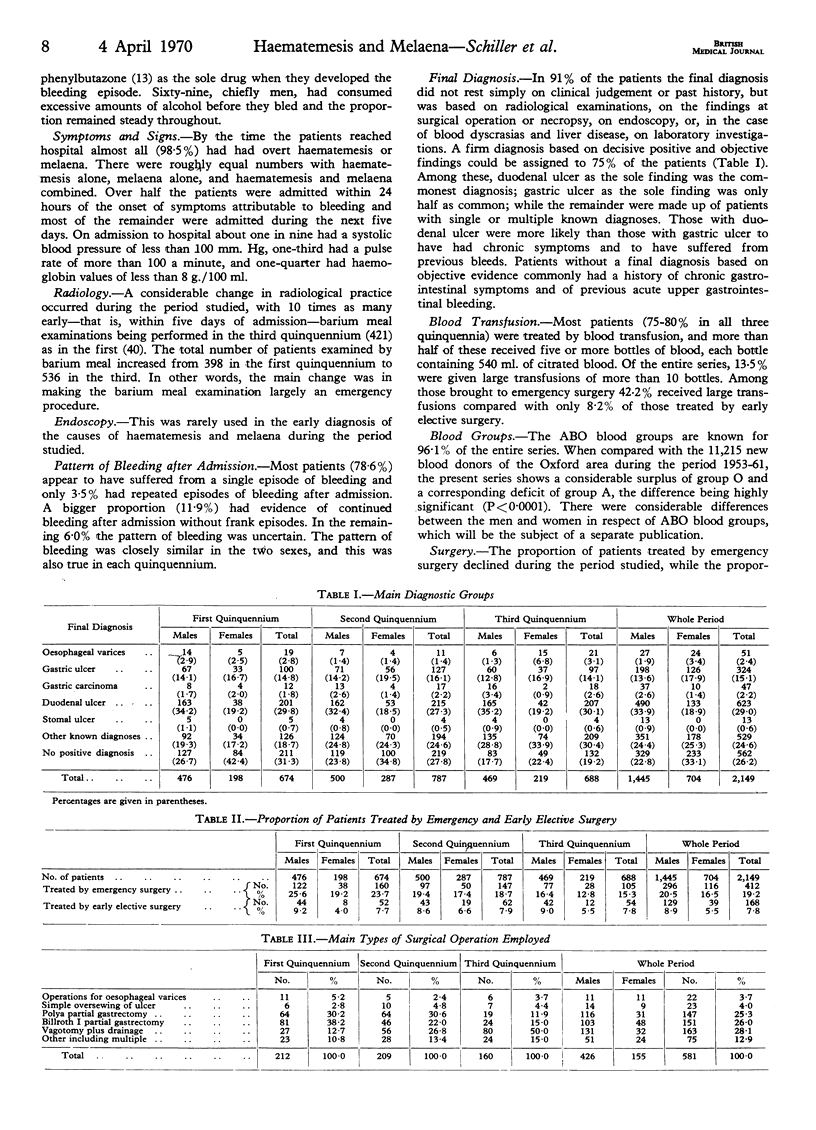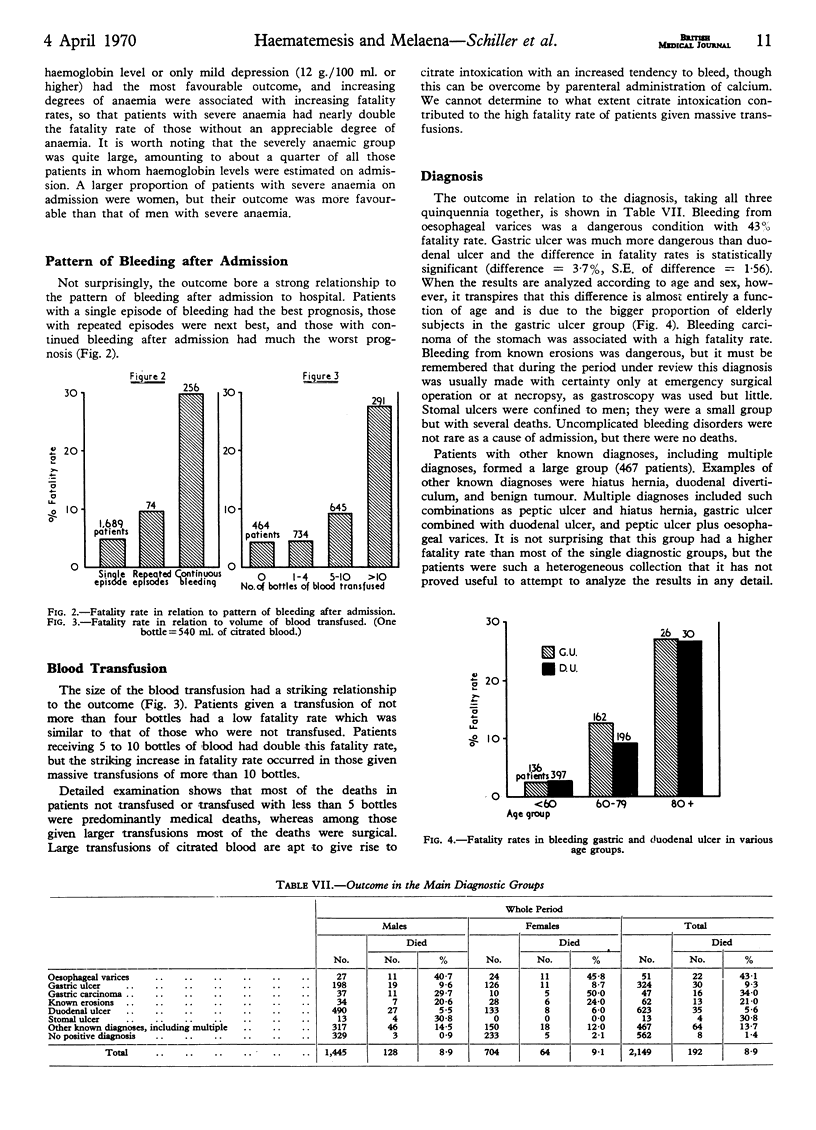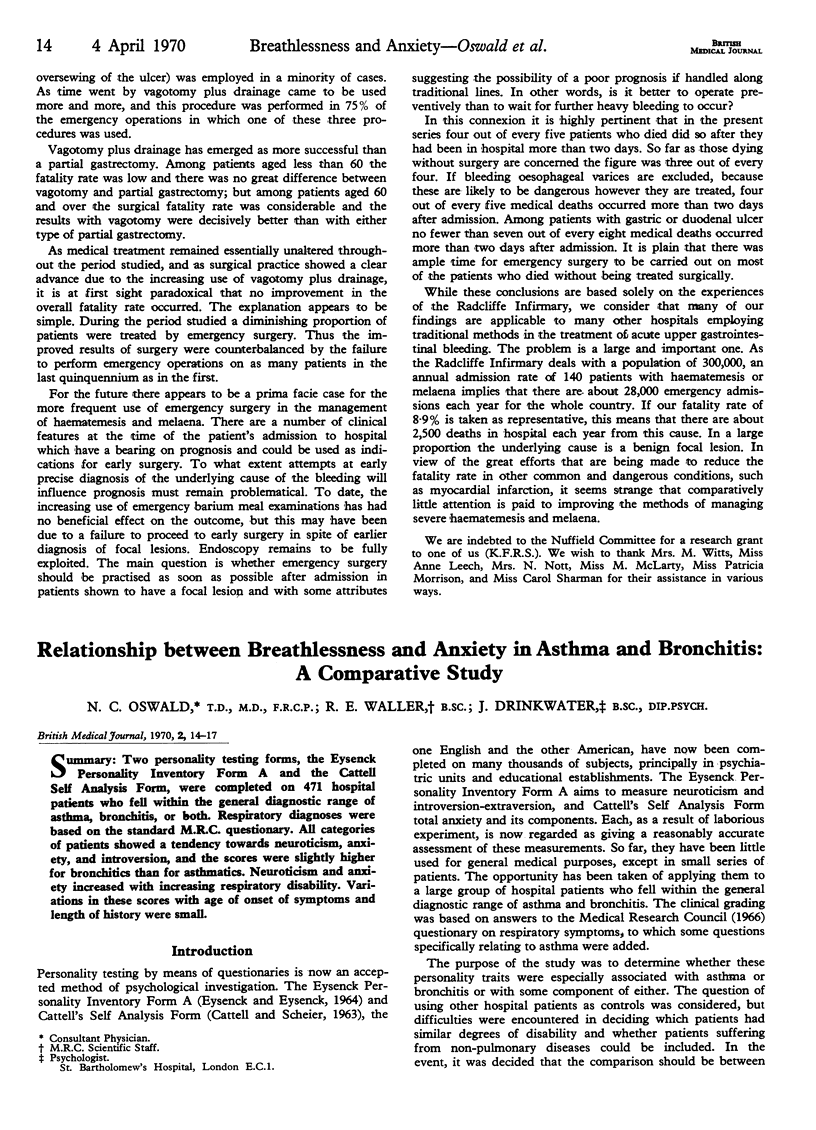Abstract
In a study of 2,149 emergency admissions because of haematemesis or melaena during a 15-year period, the sex ratio, age distribution, and main diagnostic groups showed no major change. Various factors affected the prognosis, such as the age of the patient, the underlying diagnosis, a low blood pressure on arrival at hospital, gross anaemia on arrival there, and the pattern of bleeding after admission. The fatality rate remained virtually constant throughout the period studied in spite of changes in diagnostic methods and management. There was a changing pattern in the type of operation performed in the treatment of bleeding peptic ulcer. Vagotomy combined with a drainage procedure and with a direct surgical attack on the bleeding point became more widely used at the expense of Polya or Billroth I partial gastrectomy and gave the best results. It is at first paradoxical that improved surgical results should not be reflected in a general improvement in the fatality rate, but this finding can be explained by the smaller proportion of patients treated by emergency surgery in the later years of the period studied. It is concluded that emergency surgery should be performed more frequently and that vagotomy plus drainage is the operation of choice in the peptic ulcer group.
Full text
PDF









